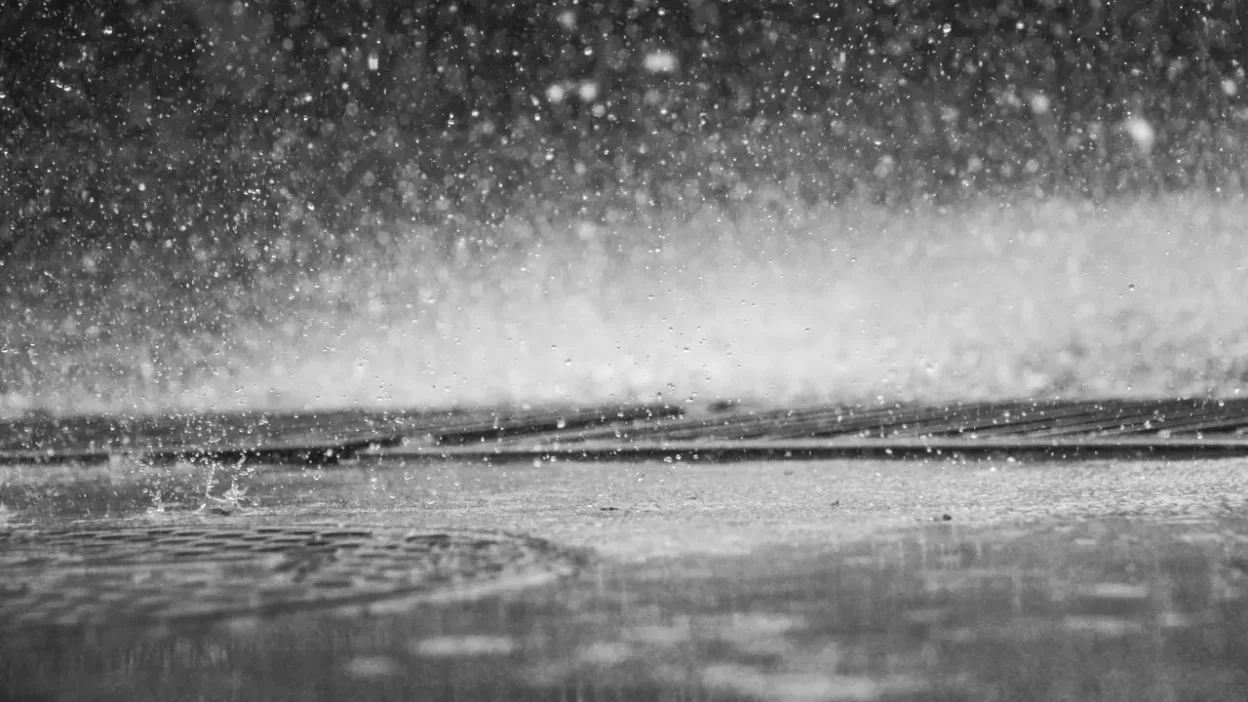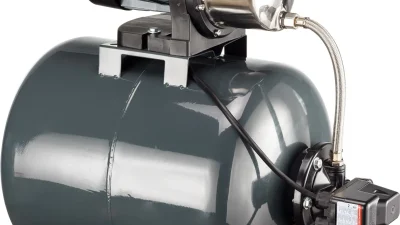Rainwater harvesting and solar pumps represent two of the most sustainable technologies available for water management today. Combining these systems allows homeowners, farmers, and businesses to reduce utility costs, promote environmental stewardship, and ensure a reliable water supply even during periods of drought or unreliable power. This guide covers everything you need to know about rainwater harvesting and solar pumps, including system design, installation, benefits, challenges, and maintenance. Whether you are considering a project for your home, farm, or business, understanding how these technologies work together can help you make informed choices that benefit your property and the environment.
Table of Contents
- Introduction to Rainwater Harvesting
- Overview of Solar Water Pumps
- Integrating Rainwater Harvesting and Solar Pumps
- Designing an Efficient System
- Installation and Best Practices
- Maintenance and Troubleshooting
- Environmental and Economic Benefits
- Challenges and Solutions
- Conclusion and Next Steps
Introduction to Rainwater Harvesting
Rainwater harvesting involves the collection and storage of rainwater from surfaces such as rooftops, greenhouses, or open fields for later use. This practice dates back thousands of years, but modern technology has expanded its potential for homes, farms, businesses, and public facilities. The primary goal of rainwater harvesting is to maximize local water resources, especially in regions facing water scarcity, rising water costs, or declining groundwater levels. Systems range from basic barrels and tanks to complex, automated setups integrated with irrigation or household plumbing. Regardless of scale, rainwater harvesting reduces reliance on municipal water, lowers utility bills, and helps manage stormwater runoff, thus mitigating flood risk and erosion.
There are several components to a standard rainwater harvesting system:
- Catchment area: Typically a roof or other impervious surface where rainwater is collected.
- Gutters and downpipes: Channels to direct water toward storage.
- First flush diverters: Devices that filter out debris and contaminants from the initial runoff.
- Storage tanks or cisterns: Containers designed for safe long term water storage.
- Delivery and treatment: Pumps and filters that move harvested water to where it is needed and ensure its quality.
Rainwater can be used for irrigation, flushing toilets, washing, and even drinking if properly filtered and treated. The system design should match the intended use and local rainfall patterns.
Overview of Solar Water Pumps
Solar water pumps utilize solar energy to move water from storage tanks, wells, or surface sources to points of use. These systems consist of photovoltaic solar panels, a controller, and a pump that can be either submersible or surface mounted. Solar pumps are ideal for off grid locations, agriculture, livestock watering, and remote irrigation systems. Unlike conventional electric or diesel pumps, solar pumps operate with minimal running costs and require little routine maintenance.
There are two main types of solar pumps:
- Surface pumps: Used for shallow sources such as rainwater tanks, ponds, or rivers. They are easier to access for maintenance.
- Submersible pumps: Designed for deeper wells or underground cisterns. These are sealed and can operate while fully submerged in water.
The size of the system and pump capacity should be matched to the water demand, storage size, and available sunlight. Controllers and sensors can optimize operation by turning the pump on when enough sunlight is available or when storage reaches certain levels. Advances in solar technology have led to more reliable and higher efficiency pumps that provide years of service with minimal intervention.
Integrating Rainwater Harvesting and Solar Pumps
Integrating rainwater harvesting with solar pumps offers a highly sustainable approach to water management. This combination enables users to capture local rainfall, store it in tanks or underground cisterns, and then pump the water wherever it is needed using clean, renewable solar energy. For many rural communities and off grid users, this integration is the most practical and environmentally friendly solution for water supply.
Key integration options include:
- Pumping harvested rainwater to elevated tanks for gravity fed distribution
- Supplying irrigation systems for gardens, lawns, or crops
- Distributing potable water in locations where filtration and treatment are in place
By using solar energy as the primary power source, users can avoid fossil fuel consumption and reduce operational expenses. Systems can be tailored to seasonal changes, ensuring water is available when needed and minimizing waste during periods of low demand.
Designing an Efficient System
Designing a highly effective rainwater harvesting and solar pump system involves several important considerations. The design should account for local rainfall, daily water needs, available roof or catchment area, storage requirements, and sunlight exposure. A well planned system ensures reliability, efficiency, and cost effectiveness over its lifetime.
1. Assessing Water Demand
Start by estimating the volume of water needed for your intended uses. Typical residential uses include gardening, indoor cleaning, and toilet flushing. Agricultural users must consider irrigation schedules, livestock watering, and crop types. Tracking past water usage or consulting local guidelines can help inform these estimates.
2. Sizing the Catchment and Storage
The roof or catchment area determines how much rainwater can be collected. Multiply the area by the annual average rainfall and a runoff coefficient (typically around 0.8 for pitched roofs) to estimate yearly yield. Storage tank size should provide enough capacity for times of peak demand and buffer against dry spells. Undersized tanks can quickly fill and overflow, while oversized tanks may not be cost effective unless large scale storage is needed.
3. Selecting the Right Pump
Choose a solar pump with output matched to demand and head height (the vertical distance the pump must lift water). Residential users often do well with small DC pumps, while larger properties may need higher capacity options. Ensuring the solar panel array provides sufficient wattage during peak sunlight hours is crucial for consistent operation.
4. Incorporating Filtration and First Flush Systems
To maintain water quality, include leaf screens, gutter guards, and first flush systems to remove debris and contaminants before water enters storage. Filters and UV disinfection can ensure water is safe for potable uses.
5. Control and Automation
Many systems now feature automated controllers that start or stop the pump based on water levels or solar availability. Combining sensors and remote monitoring can help users manage their systems efficiently and respond to any issues promptly.
Installation and Best Practices
Proper installation is essential to get the most value from a rainwater harvesting and solar pumping system. Each component must be carefully positioned and securely connected to ensure durability, efficiency, and safety.
Site Preparation
Verify that the catchment area, such as a roof, is clean and in good repair. Install gutters with sufficient slope towards downpipes, making sure debris can flow freely to the collection system. Secure tanks or cisterns on stable, level pads, and ensure they are protected from sunlight to prevent algae growth.
Installing the Solar Pump
Mount solar panels in an area with maximum exposure to the sun, free from shade throughout the day. Panels should face the appropriate direction and be angled to capture the most sunlight during peak seasons. Secure the pump near or inside the tank, following manufacturer recommendations. Connect all wiring using weather resistant components, and install fuses or circuit breakers for safety.
Piping and Distribution
Use durable, food grade pipes for potable water. Run pipes underground when possible to protect from physical damage and temperature extremes. Install non return valves and pressure regulators if needed for your application.
Testing the System
Once installed, thoroughly test the system for leaks, proper flow, reliable pump operation, and effective filtration. Calibrate sensors and controllers as needed, and establish a maintenance schedule from the outset.
Maintenance and Troubleshooting
Well maintained rainwater harvesting and solar pump systems can deliver reliable service for many years. Regular checks, periodic cleaning, and swift troubleshooting are crucial to prevent failures and ensure water quality. Here are the key maintenance tasks and troubleshooting strategies for both rainwater harvesting and solar pumping systems:
Routine Maintenance Tasks
- Cleaning Gutters and Downpipes: Remove leaves, sediment, and debris from gutters and downpipes at least twice a year, and more often in windy or heavily wooded locations.
- Inspecting First Flush Devices: Make sure first flush diverters are operational and empty them regularly to avoid backflow of contaminants.
- Tank and Cistern Care: Inspect tanks for cracks or leaks and clean out accumulated sediment every 1-2 years. A tank cover or lid will prevent insects, animals, or sunlight from contaminating stored water.
- Filter Checks: Replace or clean pre filters, inline filters, and UV lamps (for potable systems) according to manufacturer schedules.
- Pump and Solar Panel Inspection: Wipe dust or debris off solar panels quarterly or after major storms. Check electrical connections for corrosion or damage. Verify the pump’s operation and look for unusual noises or reduced water flow.
- Controller and Sensor Testing: Every few months, ensure that system automation responds properly to changing water levels or sunlight. Update software or firmware if your system is equipped with smart controls.
Common Troubleshooting Issues
- Low or No Water Output: Check for clogged filters, empty storage tanks, airlocks in pipes, or insufficient sunlight reaching panels.
- Pump Not Starting: Inspect wiring connections, battery backups (if present), or tripped breakers. Confirm there is adequate sunlight and no obstructions on the panels.
- Contaminated Water: Look for broken tank lids, blocked screen gutters, or failed first flush devices. Clean or replace filters as needed.
- Shortened Pump Life: Overheating, dry running, or sediment in water can damage the pump. Ensure the pump always has enough water and that intake points have adequate screening.
Preventive maintenance is always more cost effective than emergency repairs. Schedule and log each maintenance task, and educate every user of the system about signs of trouble to ensure fast response.
Environmental and Economic Benefits
The combined implementation of rainwater harvesting and solar pumps provides substantial environmental and financial advantages. These systems can minimize ecological footprints while offering a dependable source of water and energy.
Environmental Benefits
- Reduced Water Demand: Collecting and reusing rainwater lowers the pressure on municipal and groundwater sources, promoting aquifer recharge and preserving ecosystem balance.
- Lower Carbon Footprint: Using solar energy for pumping eliminates the use of fossil fuel powered equipment, helping cut greenhouse gas emissions and contributing to cleaner air.
- Stormwater Management: Rainwater harvesting reduces surface runoff, preventing soil erosion, urban flooding, and polluted waterways.
- Wildlife Protection: By diminishing pesticide and fertilizer runoff through controlled irrigation, local flora and fauna benefit from cleaner habitats.
Economic Benefits
- Utility Savings: Households and businesses can dramatically cut water and electricity bills by using rainwater and renewable solar power for their water needs.
- Energy Independence: Solar pumps function anywhere the sun shines, removing the need for diesel or grid dependent pumps and creating resilience during blackouts.
- Increased Property Value: Eco friendly water and energy systems often appeal to buyers seeking lower ongoing costs and sustainable infrastructure.
- Low Maintenance and Operating Costs: Once installed, high quality systems require minimal inputs compared to conventional alternatives.
For large scale agricultural and commercial users, these economic benefits multiply, making the upfront investment in rainwater harvesting and solar pumps attractive over the system’s lifespan.
Challenges and Solutions
Despite the considerable advantages, integrating rainwater harvesting and solar pumping systems comes with challenges. Understanding these hurdles and the standard solutions can help users maximize system performance.
Challenge: Variable Rainfall and Water Scarcity
In areas with highly seasonal rainfall or unpredictable droughts, harvested water may not always be sufficient.
- Solution: Design systems with larger storage capacity and consider drought resistant landscaping or crops. Connect to a secondary water source as backup for critical uses. Implement precise irrigation to minimize waste.
Challenge: High Upfront Costs
Quality tanks, solar panels, pumps, and filters represent a moderate initial investment.
- Solution: Research government incentives, rebates, or financing programs for solar and water conservation projects. Calculate return on investment based on utility savings to justify and plan for the upfront expense.
Challenge: Space and Installation Limitations
Some properties may lack suitable roof space, unobstructed sunlight, or safe locations for large tanks.
- Solution: Use modular storage tanks, wall mounted systems, or underground cisterns. Place solar panels on carports or ground mounts when roof space is limited.
Challenge: Maintenance and Technical Knowledge
Owners may lack the experience to maintain or repair automated systems or troubleshoot pump and solar panel issues.
- Solution: Choose user friendly systems with reliable warranties, and request a hands on demonstration during installation. Keep a maintenance log and review it regularly. Contact professional service providers for complex repairs or upgrades when required.
Conclusion and Next Steps
Rainwater harvesting and solar pumps stand at the forefront of sustainable water management. When designed and maintained effectively, these systems enable users to secure a reliable water supply, lower utility bills, and dramatically reduce their reliance on municipal or fossil fuel driven resources. Homeowners, farmers, and business leaders around the world are turning to integrated rainwater and solar pumping solutions for environmental, economic, and practical benefits.
Start your journey by assessing your site’s water needs, evaluating your catchment and solar potential, and consulting trusted experts for system sizing and installation. Investing in rainwater harvesting and solar pumping today is an investment in both self reliance and environmental responsibility for the years ahead.





